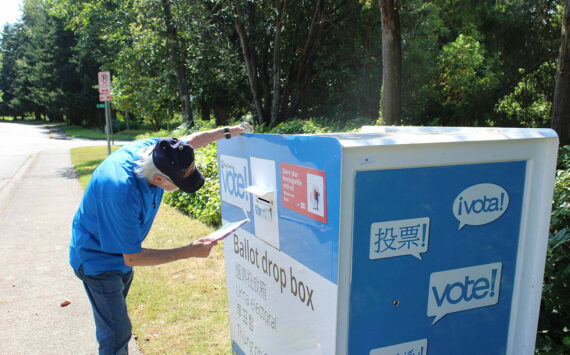Property tax exemptions for multifamily housing developers have spurred construction in Tacoma, according to city officials, regional real estate consultants, and local developers.
There has been a significant level of tax exempt program activity, contributing to building activity that might not have otherwise been expected in Tacoma, said Greg Easton, principle with Seattle-based real estate consultants Property Counselors, during the April 26 City Council study session. According to Easton, these tax breaks helped the city endure countywide downturns in the economy dating back to the early part of the decade.
The program, which was initiated in 1996 as a tool to implement the states Growth Management Act, allows qualifying multifamily housing projects to be exempt from property taxes on the value of housing improvements for a period of 10 years. The tax breaks are designed to stimulate new construction and rehabilitation of vacant or underutilized buildings for housing, expand housing opportunities in targeted areas, direct population growth to designated mixed use centers by encouraging higher density development, and achieve densities that are conducive to mass transit use.
The city designated 14 mixed use centers as eligible for the tax program. The areas include Westgate, Proctor District, James Center, Tacoma Central, 6th Avenue and Pine Street, Martin Luther King, Jr. Way, Central Business District, Stadium District, lower Portland Avenue, 72nd and Portland Avenue, 72nd and Pacific Avenue, 38th and G Street, Tacoma Mall, and South 56th Street.
Between the programs implementation through Dec. 31, 2004, the city has processed 77 applications for tax exemptions for projects totaling 4,012 residential units: 26 projects with 967 units are completed; 4 projects with 85 units are under construction; 23 projects with 1,317 units are approved, but construction has not started; and 4 projects with 95 units are pending approval.
Twenty projects with 1,548 units expired or cancelled because developers were unable to start their projects. A lot of projects werent able to come to fruition or success, Easton said. Not every project meets the financial or market requirements to succeed.
Another downfall is the number of mixed use areas without multi-family housing development. Seven of the 14 mixed use areas have not experienced development activity as a result tax exemption program. Easton said this was due to a lack of suitable sites in the area, existing rental units have not been vacant 12 months (a requirement of the program), or market conditions are not strong enough to support housing development.
Also, 82 percent of units completed to date are new units, rather than rehabilitated units that the program aims to improve. A shortage of suitable properties for rehabilitation and the restriction on displaced tenants were are likely causes, according to Easton.
Despite these drawbacks, Easton told the council that the programs benefits to the citys goals of growth management and economic development were measurably positive. Theres a lot of activity in multi-family housing in Tacoma while, as the same time, there is a decline in that type of housing in other areas, Easton said. This suggests that the program works. Much of the development activity that has occurred under the program would likely not have occurred in its absence.
In most instances, savings from the tax exempt program are passed down to renters and homebuyers. An average apartment developed without the program would rent for $684 per month; a similar apartment developed with the program would rent for $625 per month. Similarly, a homebuyer would pay an average of $200,000 for condominium developed without the program, and an average of $183,200 for the same home developed with the program.
Real estate consultant J. J. McCament reported that the program was a tool to encourage homeownership because it reduced the income requirement to qualify for a mortgage. According to McCament, a homebuyer would need to earn $70,100 annually to purchase a $285,000 home in Tacoma. A homebuyer would need to earn $59,350 annually to purchase the same condominium developed through the tax exemption program.
Councilman Rick Talbert expressed concern over the 7 districts that have not seen multi-family development as a result of the program — specifically District 4, which includes lower Portland Avenue and 38th and G Street. Tacomas Economic Development Director Ryan Petty commented that, in some instances, property owners may see more value in designating their buildings for uses other than multi-family housing. As a result, they may not elect not to participate in the program.
Tacoma is the first city in Washington state to initiate a Property Tax Exemption Program for multifamily housing.







